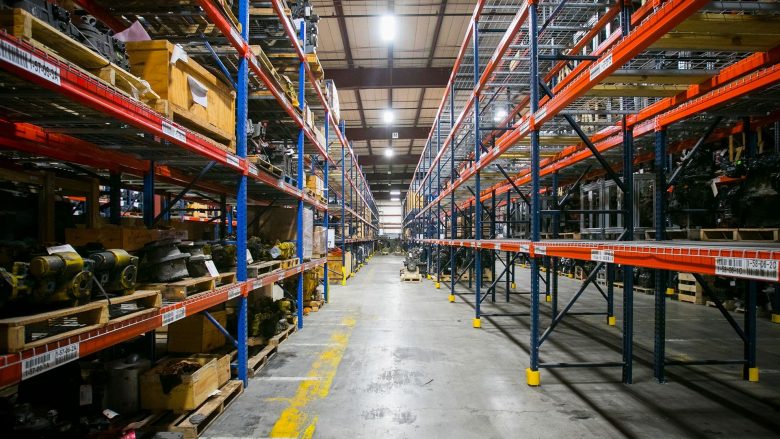
Delving into the science of tracking
Known as returnable transport items (RTIs), these unsung heroes of the supply chain allow businesses to move goods efficiently and sustainably. While these plain looking containers may seem worthless, they are valuable reusable assets that hurt a company’s profits if they are lost, stolen or damaged.
“Imagine a large brewery that distributes millions of kegs a year. If they cost $100 each, it’s a huge investment,” said Dr. Barry Cobb, associate professor of marketing at Missouri State University.

Photo by Kevin White
Understanding the problem
The main issue with RTIs, Cobb notes, is keeping track of them – especially when an RTI fleet grows bigger. So the best solution is limiting the fleet size by moving items through the supply chain loop as quickly as possible. This cuts down the cycle time, which is the time it takes for an item to leave the factory after it is filled to when it comes back for refill.
Using breweries as an example, Cobb explains that they cannot control how fast people or restaurants use up beer from a keg. However, they can often control the speed it moves from point A to B.
“The faster kegs move through the supply chain, the fewer of them are needed, which means less investment and a more sustainable model,” said Cobb, who has published more than 30 book chapters and articles about operations management, supply chain management and logistics models.

Photo by Kevin White
Making smart predictions
Although companies use technology such as Radio Frequency Identification (RFID) to track RTIs at different points in the supply chain loop, these assets can still go missing or be delayed for several reasons. The RTIs are mainly scanned only at fill locations, the fleet is only partially tagged and RFID does not have GPS tracking.
“Forecasting when containers will return is the biggest challenge,” Cobb said. “If we can develop an accurate forecast of returns without GPS technology using fill-to-fill cycle times, this provides a lot of value to a company.”
Cobb is trying to do just that. In recent years, he has focused his research on helping companies better track their RTIs and save money. An encounter with Visibility, an asset management company that works with large breweries, gave him the data he needed.
Using statistical software, Cobb analyzes the data to develop methods that are more precise to track RTIs. The methods estimate probability distributions for cycle time and return rate of containers in a fleet.

Photo by Kevin White
Average is not enough
One area he worked on involved looking at the overall cycle time distribution instead of average cycle time to predict returns.
The latter, which many companies rely on, does not give a full picture of what is going on. It fails to consider RTIs that return to the factory before or after the average time.
For example, if an average cycle time for containers is 60 days, but more than 60 percent of them return before 60 days, a company will greatly underestimate returns if it builds a forecast based on the average number. Also, because some containers have very long cycle times, the returns to the factory can include containers filled more than a year in the past.
“While it’s nice to know the average, what helps more is to know what the entire distribution looks like because this helps predict how many containers return one week or two weeks, etc. from being filled,” Cobb said.

Photo by Kevin White
Real-world impact
Tom Hare, operations manager of Visibility Asset Management Solutions, believes the most vital part of Cobb’s research is the credibility and science behind his methods as current methods can rely a bit too much on gut feel.
“His ability to use techniques that give a degree of confidence and accuracy is invaluable to our company and customers.” — Tom Hare
“We give lots of data to clients but they don’t really know how to use or interpret it,” Hare said. “Barry is able to model the data in such a way that questions like ‘how many assets do I need?’ are being answered. His ability to use techniques that give a degree of confidence and accuracy is invaluable to our company and customers.”
- Story by Emily Yeap
- Main photo by Kevin White

